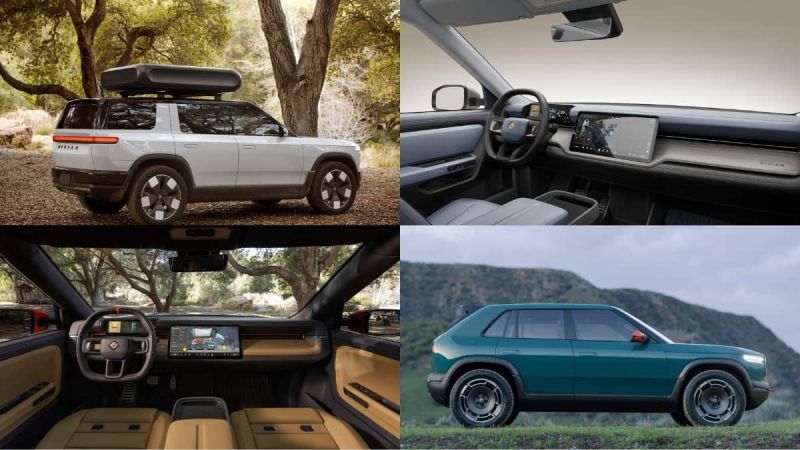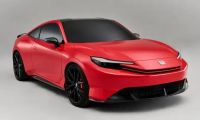Specifically, these new Rivian vehicles are putting automakers like Ford (with its rugged versions of the Bronco), Jeep (much of its lineup) and Subaru (especially its Crosstrek model) on notice because in concept form, they are already “out EV adventuring” these other gas powered adventure brands. You might think, wait a minute, these brands don’t really have any rugged, off-road styled or equipped EVs yet, and that’s my point. In the US market, Rivian already outsold Ford’s F-150 Lightning EV last year (it also outsold the Tesla Model X too) and was the 7th best selling EV overall. In 2026, when the almost half priced R2 will begin deliveries, Ford, Jeep, and Subaru are going to be in trouble (Subaru even more so whenever the R3 goes on sale since that vehicle is more specifically competing with Subaru’s higher volume vehicles). Why would consumers favor the Rivian models over these mostly gas powered options? The answer is simple: innovative design and the very nature of electric vehicles are extremely appealing to a broad swath of “adventure” seeking drivers because electric vehicles are inherently quieter, cleaner, and thus lower impact on the environment that these customers care about. Let’s take a brief look at each brand and some of their models that the new Rivians will challenge for market share.
- The Ford Bronco, ranging in price from just under $40k to over $90k US for its more off-road capable models, is potentially more expensive than the Rivian R2 (extra true when you consider fuel costs of the gas powered Bronco versus the electric R2). The main factor that may steer drivers’ decisions, besides pricing or brand loyalty, is likely to be capability. The R2 will be a capable off-road vehicle for the vast majority of people who want a vehicle that gets them into the backcountry to indulge in their active, outdoorsy lifestyles. However, the Bronco, at least in its most kitted out versions, is likely to be more capable of extreme off-roading than the R2. Then again, the R2 will almost certainly tow a heavier load than the Bronco, so you win some, you lose some. Both will offer “classic” muted color schemes, we can assume.
- The Jeep Wrangler and Grand Cherokee plug-in hybrid (PHEV) 4xe models, range in price from a little over $50k (Wrangler 4xe) to almost $80k (Grand Cherokee 4xe). Given that they are PHEVs, they are capable of electric only propulsion via grid supplied electricity and a little closer as true rivals to the R2 because of it. However, as capable as these vehicles are, their especially humble all electric ranges of 22 (Wrangler) and 26 miles (Grand Cherokee) are unimpressive and their fuel economy when running on gas (as they often will) is no more so, at 20 MPG and 23 MPG respectively. Simply put, anyone that values fuel efficiency, at all, will favor the Rivian over these vehicles. Of course Jeep’s have a die hard fan base, and Rivian may not steal many sale from that core group at all, but I would argue that there are far, far more active, outdoorsy drivers out there that wouldn’t seriously consider a Jeep in the first place that would consider the Rivian. Plus, Rivian will leave both of these Jeep models choking on dust, when it comes to acceleration, overall power and towing capacity. But, at least there are much cheaper all gas versions of the Jeeps (if you consider that to be a plus).
- The Subaru Crosstrek, Forester and Outback are all prized for their off-road and all weather capability, but honestly they don’t have much else besides price that they will be able to compete with Rivian against (and they are all much less expensive than the Rivians). The most expensive of these Subarus will be at least a few thousand less than the entry level R2 (assuming now incentives are factored in), though the R3 models may be closer in price. I suppose availability and body style preferences (because some shoppers certainly prefer wagons) may be a factor too, but Rivian simply overlaps the Subaru “type” of consumer and the two brands are almost not on the same Venn diagram otherwise. Where I think the two diverge the most is in design, or style. Subaru’s vehicle designs are perhaps only endearing to their loyal fanbase whereas Rivian’s style is simultaneously cutting edge (or at least sharply modern) and retro chic. It really isn’t much of a competition, I’m afraid.
What do you think about the new Rivian vehicles? Are you more inclined to follow the Wall Street Journal and its negative stance that the electric vehicle market has “moved on” (a sentiment that I think is both narrow minded and a bit naive, at least when it comes to the enormous potential demand, globally speaking)? Or are you impressed by Rivian’s bold new designs for a more mass market audience? Please leave your questions and comments below.
Images courtesy of Rivian.
Justin Hart has owned and driven electric vehicles for over 15 years, including a first generation Nissan LEAF, second generation Chevy Volt, Tesla Model 3, an electric bicycle and most recently a Kia Sorento PHEV. He is also an avid SUP rider, poet, photographer and wine lover. He enjoys taking long EV and PHEV road trips to beautiful and serene places with the people he loves. Follow Justin on Torque News Kia or X for regular electric and hybrid news coverage.











